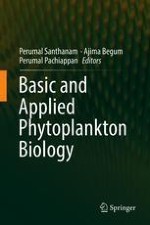2019 | OriginalPaper | Buchkapitel
A Method of Analysis of Pigments in Phytoplankton
verfasst von : N. Krishnaveni, A. Shenbaga Devi, P. Santhanam
Erschienen in: Basic and Applied Phytoplankton Biology
Verlag: Springer Singapore
Aktivieren Sie unsere intelligente Suche, um passende Fachinhalte oder Patente zu finden.
Wählen Sie Textabschnitte aus um mit Künstlicher Intelligenz passenden Patente zu finden. powered by
Markieren Sie Textabschnitte, um KI-gestützt weitere passende Inhalte zu finden. powered by
